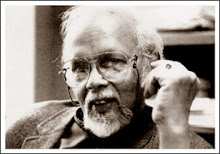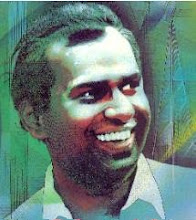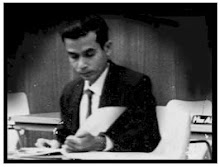
By E. M. G. Edirisinghe
The Island / 03Jan1999
Kohomba Kankariya is the most famous and the most stately of all Lankan ritual theatre. Next to it is the much simpler forms of ritual performed by Gam Maduwa and Devol Maduwa instilled by the goddess Pattini whose cult considers her to be a powerful deity of influence with respect to contagious diseases and personal distress.
Sri Lanka carries a history of theatre back to pre-Christian era, recounts only of these dance forms breathing theatrical life and frame into ritualistic performances of the people.
Ritualistic theatre that frames the core of our theatre tradition is performed in promotion of community welfare and to heal the sick afflicted, mostly with mysterious illnesses which are non-diagnosable by the professionally ill-equipped native physicians. Therefore, to trace the history of ritualistic and folk theatre in Sri Lanka is a journey to study her traditional theatre. On the other hand, in that regard, the Sri Lanka theatre can be modestly be proud of retaining, and persistently preserving a tradition capable of theatre environment for the growth and expansion of sustaining an adequate what could be called national or modern theatre in the years that followed.
Looking back, what comes first to mind is Kohomba Kankariya, that most famous and the most stately of all Lankan ritual theatre. A student of folk drama who begins with "thei" the first step in traditional dance form matures into a complete traditional theatre with the performance of Kohomba Kankariya the pinnacle of ritualistic and folk theatre in Sri Lanka. It gives precedence to dance element over all other components of folktheatre. Performed in honour of God Kohomba an animistic deity, Kohomba literately means margosa a herbal medicinal plant for all times with strong potential to kill germs and clean the physical environment.
Next to it is the much simpler forms of ritual performed by Gam Maduwa and Devol Maduwa instilled by the goddess Pattini whose cult considers her to be a powerful deity of influence with respect to contagious diseases and personal distress.
Another class of ritual theatre is known as bali and thovil. The communal nature evident in the ritual connected to the Pattini cult has given way, in this category, for individual illnesses. Bali denotes a ritual sanctified in the nine planetary deities while thovil is performed to charm and appease the demons who are supposed to bring evil and disaster upon the individual. In these forms of ritual theatre dance and mime recede to insignificance with incantation receiving heavier accentuation. There are different kinds of thovil like Sunni Yakuma, Rata Yakuma and Sanni Yakuma each of which are believed to bring in one or more demons to demonstrate.
All this ritual theatre, always performed in the night are never acted on elevated platforms, but on flat land with the spectators seated and standing in a circle round the performance area attaining a very intimate and participatory relationship.




































No comments:
Post a Comment